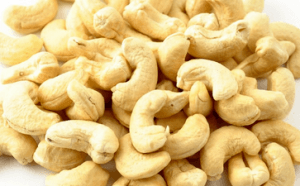Over 2000 Wa West farmers receive cashew seedlings
 More than 2,000 cashew farmers in Wa West District of the Upper West Region have received 8,000 cashew seedlings under the Planting for Food and Export promotion programme.
More than 2,000 cashew farmers in Wa West District of the Upper West Region have received 8,000 cashew seedlings under the Planting for Food and Export promotion programme.
The five-year programme is expected to support the planting of over 2,000 acres of farmlands across the District but the Assembly has been able to plough around 300 acres.
It aims to increase cashew production, raise income of farmers and cut down the unemployment rate as well as modernize agriculture in the District.
Addressing farmers and community members at Ga community in the Wa West District, Mr Edward Laabiir Sabo, the District Chief Executive, said the Assembly has ploughed about 300 acres of farmlands for registered farmers to plant the cash crop.
Agriculture remains the main source of livelihood for the people there with more than 70 per cent of them going into crop farming, animal rearing and few into agric-business.
Government as part of effort to support Ghana’s agriculture sector under the Planting for Food and Jobs (PFJs), supplied over 60,000 bags of fertilizer and 574 bags of seed inputs to farmers this year.
The seeds include maize, rice, soya beans and sorghum, which Mr Laabir said have already been distributed to local farmers for planting.
Mr Joseph Kambunabe, the District Director of Agriculture, highlighted the five thematic of the programme.
It includes: supply of improved seeds to farmers at subsidized prices, supply of subsidized fertilizers to farmers, free extension services, marketing opportunities and repayment of farm inputs after harvest.
Alhaji Suleman Alhassan, Upper West Regional Minister, described cashew farming as having a huge potential to create more jobs for the teeming unemployed youth.
He called on the youth in the area to take advantage of numerous government policies to create jobs for themselves.
Mr Issah Adams, a farmer from Naasah community, who spoke on behalf of the beneficiaries, expressed gratitude to the Assembly and government for taking the needed steps to engage the youth in farming.
Source: GNA
